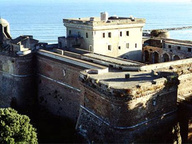Vicolo della Penitenza 11/A

Vicolo della Penitenza 11/A. Exhibition view, MACRO 2023. Ph. Piercarlo Quecchia – DSL Studio
From 9 June 2023 to 14 January 2024
Rome
Place: MACRO - Museo di Arte Contemporanea
Address: Via Nizza 138
Responsibles: Janice Guy
Organizers:
- Assessorato alla Cultura di Roma Capitale
- Azienda Speciale Palaexpo
Telefono per informazioni: +39 06 696271
E-Mail info: info@museomacro.it
Official site: http://www.museomacro.it
In September of 1989, Cindy Sherman and Michel Auder arrived in Rome to participate in a residency programme initiated by art dealer Barbara Gladstone and art advisor Thea Westreich known as The Rome Studio. They were the first in a series of artists who, for the following two years, would live and make work in Vicolo della Penitenza 11/A, Trastevere, for a period of up to two months each, under the guidance of artist and curator, Janice Guy. In November of 1989, Richard Prince arrived together with his then assistant DW Fitzpatrick, followed by Meyer Vaisman, Gary Hume (and his partner at the time, Sarah Lucas), On Kawara and Thomas Struth over the course of 1990, and Franz West, Christopher Wool, Lawrence Weiner, Julian Lethbridge and Reinhard Mucha in 1991.
The exhibition encompasses the works made by the twelve artists that were officially invited to participate in the residency programme, and also includes works by DW Fitzpatrick and Sarah Lucas, as well as Sarah Charlesworth, who visited Cindy Sherman and used her time in Rome to research for her subsequent body of work.
The works they developed at The Rome Studio are not presented in isolation but rather in relation to the city of Rome at the time, to the conditions of a residency programme that transplanted their individual practices into a new and unfamiliar context, and in relation to each of their own individual practices as a whole. Several of the artists came from and are associated with specific geographical, social and stylistic contexts whose canons were entwined with national identity, including the Young British Artists, the US based Pictures Generation and the Düsseldorf School. Thus the exhibition offers yet another layer through which to look at and interpret a generation of artists, a vignette through which to observe the Western art-world during the fall of the Soviet Union, at the end of the Cold War and during the First Gulf War. Rome, with its centuries-old reputation as a city in which artists might somehow come of age, was also at a crossroads and undergoing rapid change during those years, which saw the political upheaval that would eventually lead to the fall of Italy’s First Republic in 1994. The city’s influence is most apparent in Cindy Sherman’s subversions of Italian Old Master portraiture, Thomas Struth’s black-and-white, central-perspective views of the city’s streets, and Reinhard Mucha’s photographic loop through its train stops. Other artists were more subtle: Gary Hume made his signature door wall paintings with a local technique in use since the Middle Ages, Michel Auder and Christopher Wool were both drawn to the Italian mass media landscape, and Lawrence Weiner to the “heat of the sun”. Sarah Lucas’ video Sausage Film (1991) initiates the feminist-punk YBA aesthetic.
The exhibition presents an overview of the residency from Cindy Sherman in 1989 to Reinhard Mucha in 1991 and includes an epilogue set in New York City where Thomas Struth and Meyer Vaisman met and collaborated on the series Roma (1992) in which Vaisman interprets Roman hand gestures, captured by Struth.
The exhibition encompasses the works made by the twelve artists that were officially invited to participate in the residency programme, and also includes works by DW Fitzpatrick and Sarah Lucas, as well as Sarah Charlesworth, who visited Cindy Sherman and used her time in Rome to research for her subsequent body of work.
The works they developed at The Rome Studio are not presented in isolation but rather in relation to the city of Rome at the time, to the conditions of a residency programme that transplanted their individual practices into a new and unfamiliar context, and in relation to each of their own individual practices as a whole. Several of the artists came from and are associated with specific geographical, social and stylistic contexts whose canons were entwined with national identity, including the Young British Artists, the US based Pictures Generation and the Düsseldorf School. Thus the exhibition offers yet another layer through which to look at and interpret a generation of artists, a vignette through which to observe the Western art-world during the fall of the Soviet Union, at the end of the Cold War and during the First Gulf War. Rome, with its centuries-old reputation as a city in which artists might somehow come of age, was also at a crossroads and undergoing rapid change during those years, which saw the political upheaval that would eventually lead to the fall of Italy’s First Republic in 1994. The city’s influence is most apparent in Cindy Sherman’s subversions of Italian Old Master portraiture, Thomas Struth’s black-and-white, central-perspective views of the city’s streets, and Reinhard Mucha’s photographic loop through its train stops. Other artists were more subtle: Gary Hume made his signature door wall paintings with a local technique in use since the Middle Ages, Michel Auder and Christopher Wool were both drawn to the Italian mass media landscape, and Lawrence Weiner to the “heat of the sun”. Sarah Lucas’ video Sausage Film (1991) initiates the feminist-punk YBA aesthetic.
The exhibition presents an overview of the residency from Cindy Sherman in 1989 to Reinhard Mucha in 1991 and includes an epilogue set in New York City where Thomas Struth and Meyer Vaisman met and collaborated on the series Roma (1992) in which Vaisman interprets Roman hand gestures, captured by Struth.
SCARICA IL COMUNICATO IN PDF
thomas struth
·
franz west
·
richard prince
·
julian lethbridge
·
sarah lucas
·
cindy sherman
·
lawrence weiner
·
michel auder
·
gary hume
·
christopher wool
·
sarah charlesworth
·
on kawara
·
dw fitzpatrick
·
reinhard mucha
·
meyer vaisman
COMMENTI

-
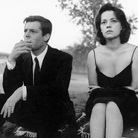 Dal 10 July 2025 al 10 August 2025
Roma | Palazzo Esposizioni Roma
Dal 10 July 2025 al 10 August 2025
Roma | Palazzo Esposizioni Roma
-
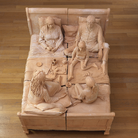 Dal 10 July 2025 al 3 November 2025
Casale Marittimo | Bolgheri, Castagneto Carducci, Casale Marittimo
Dal 10 July 2025 al 3 November 2025
Casale Marittimo | Bolgheri, Castagneto Carducci, Casale Marittimo
-
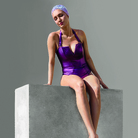 Dal 4 July 2025 al 21 September 2025
Roma | Palazzo Bonaparte
Dal 4 July 2025 al 21 September 2025
Roma | Palazzo Bonaparte
-
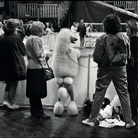 Dal 28 June 2025 al 21 September 2025
Roma | Palazzo Bonaparte
Dal 28 June 2025 al 21 September 2025
Roma | Palazzo Bonaparte
-
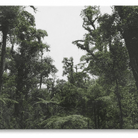 Dal 24 June 2025 al 29 October 2025
Firenze | Museo Novecento
Dal 24 June 2025 al 29 October 2025
Firenze | Museo Novecento
-
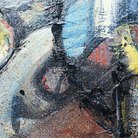 Dal 26 June 2025 al 18 July 2025
Firenze | Palazzo Sacrati Strozzi
Dal 26 June 2025 al 18 July 2025
Firenze | Palazzo Sacrati Strozzi
